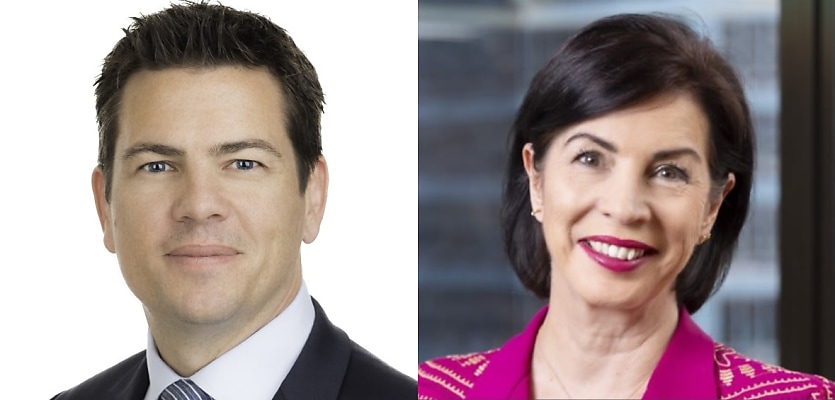A chief economist has made the case that the Reserve Bank is likely to hold through 2024, but the latest inflationary data could paint a different picture.
There are a variety of reasons to believe that the Reserve Bank of Australia (RBA) may take longer to deliver easing than other central banks, according to HSBC chief economist Paul Bloxham.
As such, HSBC foresees that rate cuts will not arrive until 2025 but maintained that a cash rate hike in coming months is still a distinct possibility.
Core inflation is still stuck in the mud
Core inflation, which is still above the RBA’s target, is being held up by “sticky components”, Mr Bloxham explained.
“Part of the challenge is that rents have been rising rapidly and given a hard-to-fix housing supply shortage, are set to remain strong for some time yet,” he said.
“Housing construction is well below the rate needed to meet population-led demand growth, and there are a range of structural headwinds for residential construction. The lag between newly negotiated rent prices and the effect on all rents means this will support elevated inflation for some time yet.”
Over the last six months, Australia’s trimmed mean CPI has been 4.5 per cent annualised quarter-on-quarter, exceeding the RBA’s 2 to 3 per cent inflation target.
As such, “sticky components”, like services, have been holding up inflation at an above-target rate, according to Mr Bloxham.
Aussie productivity remains weak
Mr Bloxham further noted that unit labour costs have been driven higher than is consistent with the RBA’s inflation target, with productivity in Australia remaining weak.
With labour being a key input into services production, he said this is playing a part in holding up inflation, particularly services inflation.
“This contrasts with the US, where productivity has rebounded and unit labour cost growth has fallen sharply,” Mr Bloxham observed.
Reserve Bank is prioritising a soft landing
Although the RBA’s increase of 425 bps is by no means insignificant, it falls short of the more assertive measures taken by other central banks, including the Federal Reserve, the European Central Bank, and Bank of England, all of which have implemented hikes of 450 bps or more.
Mr Bloxham said: “The RBA’s cash rate is, arguably, less far above a ‘neutral rate’ than in these other economies and is therefore delivering less drag on the economy.
“Much of this was by design, with the RBA purposefully prioritising an economic soft landing, and stating that it was prepared to be more patient about disinflating the economy.”
While the economy may benefit from a soft landing, this strategy would also imply that the RBA is likely to be one of the last central banks to cut.
Consumer spending may resurge
While federal fiscal policy has been fairly well aligned with the inflation fighting objective, Mr Bloxham forecasted that this may start to diverge come mid-year.
“Part of this reflects already legislated stage three tax cuts that start on 1 July and seem unlikely to be repealed,” he said.
HSBC sees this as supporting consumer spending and inflation and expects consumers to treat the tax relief as additional income that they may be inclined to consume out of.
This is alongside the prime minister recently hinting at cost-of-living relief being part of the 2024–25 budget.
Commodity prices to underpin
Mr Bloxham projects that still-high commodity prices – driven by supply constraints, geopolitical uncertainty, the energy transition, and an expected ongoing policy-driven recovery in China – are set to underpin national incomes and the resources sector in 2024.
This has been reflected in the recent rise in iron prices, which is currently above US$140 per tonne.
“We expect the global energy transition to be a positive for Australia’s growth and national incomes,” Mr Bloxham concluded.
Inflation paints a different picture
The chief economist's considerations came prior to the release of the latest Consumer Price Index (CPI) from the Australian Bureau of Statistics, which provided positive sentiment for the property sector over the coming year.
According to the latest insights, inflation rose just 4.3 per cent in the 12 months to November 2023 - a drop from the 4.9 per cent inflation recorded in the 12 months to October 2023.
'Slowly but surely'
Real Estate Institute of Australia (REIA) president, Leanne Pilkington, noted November’s numbers continue the downward trend being seen in inflation, following on from the September quarter’s 5.4 per cent result and the 6 per cent figure seen across the June quarter.
It’s also well down on the inflationary peak, which leaped to 8.4 per cent in December 2022.
Ms Pilkington remarked that “the thirteen rate hikes by the RBA since May 2022 are slowly but surely slaying the inflation dragon.”
She explained that the current inflationary trajectory tracks with findings contained within a recently released UN report, World Economic Situation and Prospects, which expects Australia’s inflation to come down to 3.3 per cent across the coming year.
This is also consistent with Treasury forecasts, which expect inflation of around 3.75 per cent over this financial year.
Can a rate reduction be expected?
As to what the latest CPI data means, Ms Pilkington noted that “the lagged response to the successive interest rate hikes are showing up in the CPI.
“The financial markets are anticipating that if this continues home buyers can anticipate a rate reduction,” the president outlined.







You are not authorised to post comments.
Comments will undergo moderation before they get published.